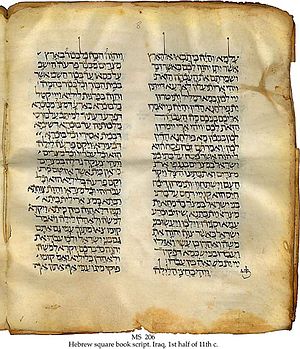OK, that’s just a catchy title for this post, but let me explain the issue I want to highlight. There are great debates about which translation methodology is best all over the web (including on this very blog, see here and here). Is a literal “formal equivalent” translation better, or is a “dynamic equivalent” translation better? Or perhaps even a foreignising translation! What is generally lacking, however, is an examination of whether a particular translation methodology is endorsed in Scripture itself.
The Christian Bible, uniquely among religious books, does actually tell us something about translation. The reason is that the NT was written in Greek while the OT was written in Hebrew and Aramaic, and the NT quotes the OT in translation. This means that it is possible to analyse the type of translation methodology which finds approval in the NT. This, in turn, may allow us to draw some inferences about modern translation methodologies and how appropriate they are!
OK, so much for the introduction, now to the nuts and bolts. In this and the next post I’ll take a look at a couple of examples of the NT quoting the OT. First, and perhaps most famously, is Isa 7:14. Here’s the MT:
הנה העלמה הרה וילדת בן וקראת שמו עמנו אל
There is little substantive difference in 1QIsaa, so there’s some reason to believe that the Hebrew of this passage was relatively stable by NT times. Nonetheless, here’s how the LXX translated it:
ἰδοὺ ἡ παρθένος ἐν γαστρὶ ἕξει καὶ τέξεται υἱόν, καὶ καλέσεις τὸ ὄνομα αὐτοῦ Εμμανουηλ
Finally, here is the text as it appears in Matt 1:23:
ἰδοὺ ἡ παρθένος ἐν γαστρὶ ἕξει καὶ τέξεται υἱόν, καὶ καλέσουσιν τὸ ὄνομα αὐτοῦ Ἐμμανουήλ
The significant point is the choice of the Greek παρθένος to translate the Hebrew עלמה. Nowhere else is עלמה translated with παρθένος, that term is usually used for בתולה. The Hebrew עלמה appears only a few times, but is translated with νεότης in Prov 30:19 and νεᾶνις in Exod 2:8, both of which indicate that the translators of those passages understood the term to have a broader semantic range than merely a reference to a virgin.
The LXX and NT versions of this verse, then, appear to deliberately avoid using a Greek word with a similar semantic range to the Hebrew word and, in doing so, present a very specific interpretation of the verse which, while not necessarily incompatible with the Hebrew, significantly narrows the range of possible meanings available in the Hebrew text.
Consequently, it is fair to say that the Greek translations of this verse, reflected in the LXX and authorised by the NT, do not adopt a “formal equivalent” translation methodology. The Greek παρθένος is not a good choice if you want to preserve the full semantic range of the Hebrew עלמה. It does not fit the parameters of “literal” or “word-for-word” which are frequently associated with such translations. It is inconsistent when compared with the translation choices made elsewhere and it substantially narrows the possible array of interpretations open to the reader. Yet such a translation is approved of by the NT!
In the next post I shall pursue this further with another example and some further observations.


While my technical language skills are not up to par for engaging on the level you are – its a fascinating subject and I look forward to your future posts on the subject as your asking and answering the questions I have asked before hand.